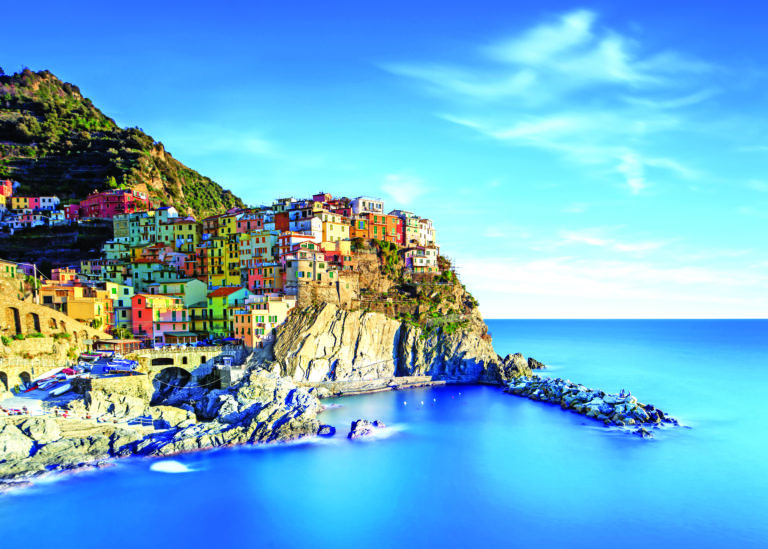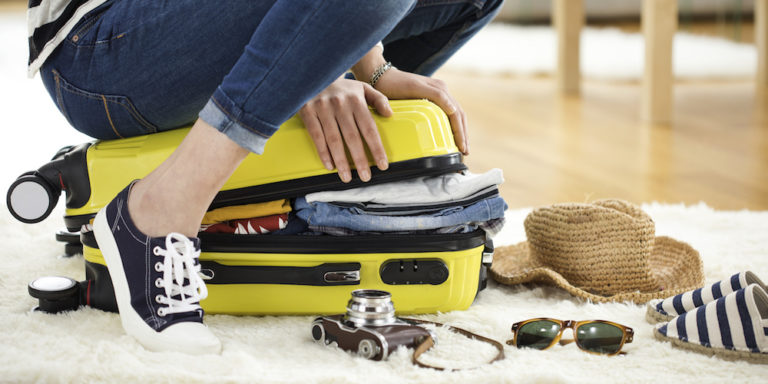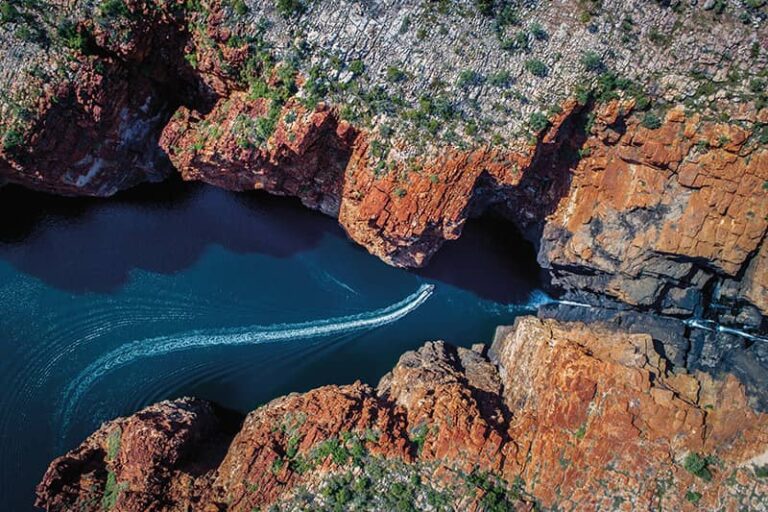From the ocean, Nihiwatu looks like a traditional Sumbanese village: the alang alang thatched roofs of 28 villas poke out from pandanus trees like giant shaggy witch hats. As surfers catch their last waves of the day on a left-hand reef break that peels off a striking sea stack, the fog machines turn on. It’s as if the red sun on the horizon sets the place on fire.
The “fog” is to repel mosquitoes, which can still carry malaria on Sumba, one of Indonesia’s poorer islands, located about 400 kilometres southeast of Bali. The smoke is a reminder of the threat this disease still poses to villagers, who depend on mosquito nets for protection. The good news is malaria rates have declined by 85 per cent since the Nihiwatu resort opened 16 years ago, with much of that success due to the efforts and resources of guests.
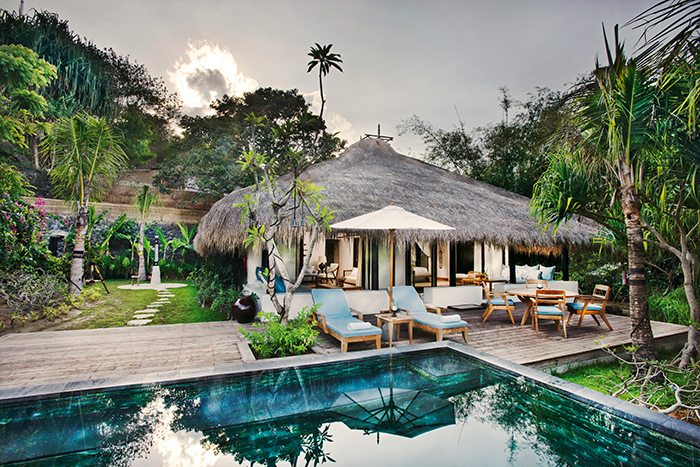
Secret surfing destination
The story of the resort is a little like Robin Hood meets The Endless Summer. It goes like this: in 1988, at the end of a round-the-world surf trip, American surfer Claude Graves and his German wife Petra hiked across this island and discovered a consistent reef break – now known as Occy’s Left, in honour of the Australian world champion Mark Occhilupo. They pitched a tent and 11 years later opened a rustic surf lodge named after a sacred rock formation nearby. Nihiwatu has been a secret escape for surfers ever since, as well as European royalty and cultural icons from Jann Wenner, co-founder of Rolling Stone magazine, to the resort’s new owner, US entrepreneur Christopher Burch. With the encouragement of hotelier James McBride (of The Carlyle Hotel in New York), who is partner in the venture, as well as his three surfer sons, Burch bought the property in 2012 with the goal of preserving the soul of the place while enhancing its style and reach.
It’s the ancient culture that sets the experience apart. Locals still practise animistic traditions, which often involve animal sacrifices. Head hunting was only outlawed in the 1950s, and Sumbanese men still walk around with parang machetes tucked into their ikat belts. In Nihiwatu’s early days, the Graveses set up the Sumba Foundation to help preserve this unique way of life and bring healthcare and education to the 650,000 or so people who call the island home.
Not only is the resort Sumba’s largest employer, with 98 per cent of staff coming from the island, but the foundation has also treated more than 20,000 malaria patients in five clinics and provided clean water to around 170 villages. It has set up a malaria training centre and worked with 15 schools to offer nutrition classes, books and healthy school lunches.
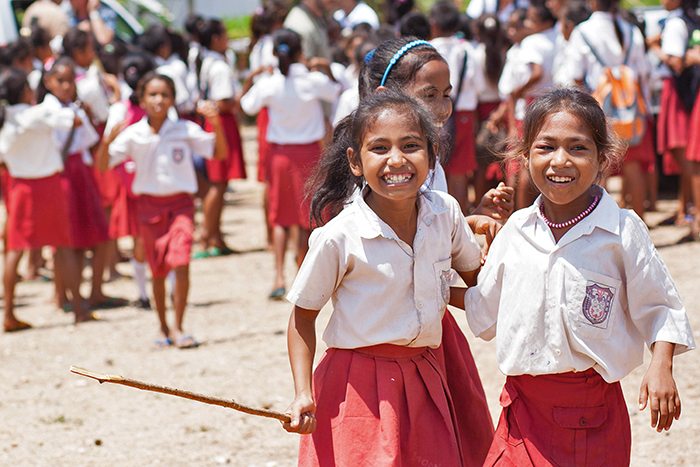
A healthy environment for all
“It’s not a glass-dome situation,” says Dr Claus Bogh, a malaria expert who has worked with the foundation for the past 12 years. “You can see how people really live but it’s a safe environment, and you can come back and have a nice dinner. There’s a story to tell and it’s the guests who are creating it.”
Burch is a case in point. It only took one visit to motivate him to purchase the property and put $30 million towards renovations. That’s not counting the money he personally donates each year.
The hotel reopened in 2014 with villas fashioned from teak, volcanic rock and rattan. The oceanfront Ombak restaurant (ombak means “wavefront” in Indonesian) and the more casual Nio Beach Club serve Indonesian and Western fare prepared with organic produce grown in the on-site garden, as well as free-range chicken and eggs. Then there’s the wellness haven of Nihi Oka, and an open-air yoga pavilion that offers the best view on the property.
“I think Nihiwatu is getting up there with the best resorts in the world,” says Sean Borland, a Scottish magician and body language expert, who first came to Nihiwatu as part of the new “guru” programme, which offers residency to people with diverse talents. He shows me around Mamole, a just-opened tree house where three circular villas are connected by spiral staircases and suspended walkways. Sumbanese culture pops up everywhere, from the famous ikat weavings and crosshatch ceilings to carved support beams and decorative horns from the prized water buffalo. And then there are two plunge pools, because, well, the complex costs US$6000 a night.
While it’s easy to hop between the beach, private pools and outdoor showers all day – the villas in the Raja Mendaka estate bathrooms have tiki-style wood walls and glimpses of Occy’s Left – travellers won’t appreciate the full Nihiwatu story without visiting a village or going on the Sumba Foundation tour, both included in the price.
When we reach a nearby school, our Jeep is rushed by dozens of smiling children – they wave and yell “da!” (hello). Burch’s daughter Izzie is the first one out of the vehicle, and the kids scream and scatter as she starts an impromptu game of tag. At lunchtime, local mothers and hotel guests scoop rice, sautéed greens in tomato broth and boiled eggs from large vats. The schoolchildren wait in line patiently, holding up their plates for shade. Eyes light up when the dishes return overflowing with food. “Terima kasih” – “thank you” – they reply sweetly.
“This is their best meal of the week,” says one of the servers, Rainy Octora, who is the director of the Sumba Foundation. “At home, kids only eat corn powder or tapioca when it’s dry. When they do have rice, they eat it plain with salt.”
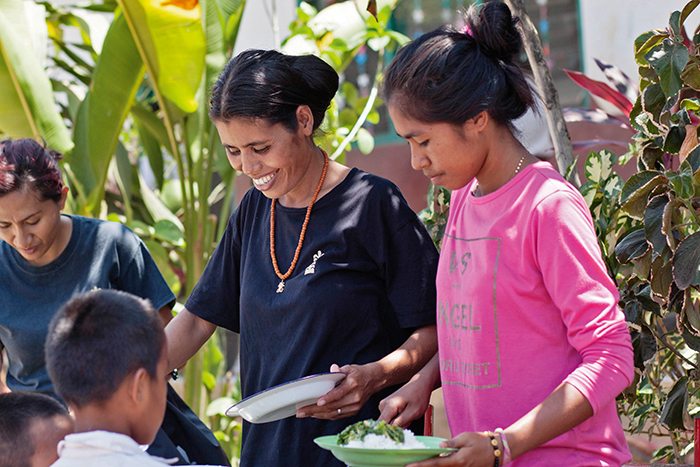
More than just a resort
On our way back to the resort, we visit a modest malaria clinic and hear about the mosquito nets and ultrasound machines donated by Nihiwatu guests. The clinic also treats pneumonia and scabies and has performed cataract surgeries under the direction of Australian eye doctor Mark Ellis. “People are more aware because we’re educating them about symptoms,” Octora says. “Before, if people got sick they thought they were cursed.”
A few nights later, over grilled fish and banana-leaf salad at Ombak, Octora tells me the story of growing up in Anakalang, about 40 kilometres east of the resort. Her parents were teachers, so unlike many girls on the island she had a good education that included senior high school in Java and Catholic university in Jakarta. While most women who leave the island never come back, Octora did; in fact, she’s the only employee to have emailed the resort looking for a job. She says the hardest but most rewarding part of her job is empowering mothers and promoting health and education for their children. “The way you change your life is through education, especially for girls,” she says. “That’s the only way.”
A woman named Ambu who I meet at Tambolaka Airport before flying back to Bali echoes Octora’s sentiment. “Nihiwatu has taught us everything,” she says. “Speaking English, food … We didn’t even know what Bintang [a brand of beer] was. It’s really helpful for Sumbanese people, and now we can stay here.”


